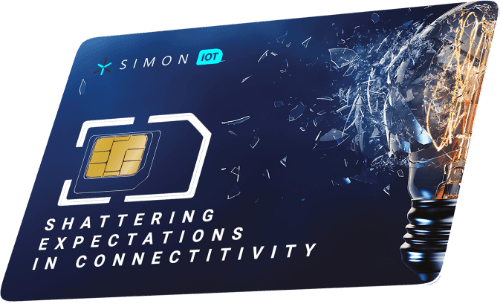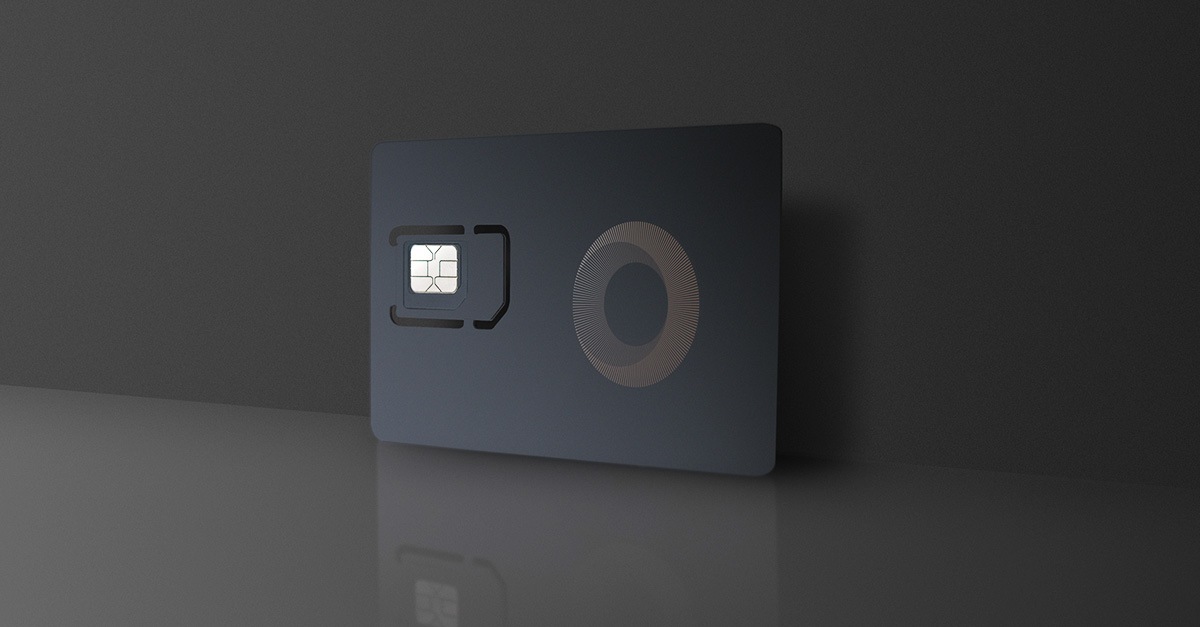Aws IoT Connectivity Definition of Internet of Things
The evolution of smart homes has reworked the means in which we work together with our living areas. At the core of this transformation lies the need for effective IoT connectivity solutions. These solutions combine various devices, enabling seamless communication and automation, making life more convenient and efficient.
IoT, or the Internet of Things, refers to the interconnected community of gadgets that talk over the web. For smart houses, this means appliances, safety techniques, heating and cooling items, and even lighting could be controlled remotely and work in conjunction with each other. Selecting one of the best IoT connectivity solutions is thus essential for ensuring optimum performance and a cohesive smart house experience.
IoT Connectivity Technologies Providers of Cellular IoT Connectivity
Firstly, Wi-Fi stays a dominant selection for connecting smart residence units. Its widespread availability and compatibility with virtually all smart units make it an accessible option. High-speed web connections enhance the performance of smart units, allowing them to operate easily. However, because the variety of gadgets in a house increases, competition for bandwidth could result in connectivity points.
Zigbee is another distinguished connectivity answer, particularly favored for its low energy consumption and mesh networking capabilities. This protocol permits units to speak with one another directly, enhancing reliability and range. Zigbee units form a mesh community, which means that they can relay messages to and from each other. This is especially helpful for larger properties where Wi-Fi signals might wrestle to cowl every area.
Connectivity Technologies In IoT Enabling Internet of Things Connectivity
Z-Wave serves as an different choice to Zigbee with similar benefits however some distinct differences. Z-Wave’s concentrate on house automation ensures that gadgets from varied producers can coalesce into a unified network. The know-how is designed primarily for smart house gadgets, making it extremely specialised. Moreover, while Zigbee operates on the 2.4 GHz frequency, Z-Wave utilizes decrease frequencies, which might present higher penetration through partitions and other obstacles.
Bluetooth is commonly used for short-range system communication. Its low energy consumption is ideal for units that do not require steady connectivity. Many smart residence products, corresponding to smart speakers and lights, make the most of Bluetooth, permitting for easy pairing and use. However, its limitations in range mean it is sometimes not appropriate as a backbone for a whole smart residence system.
LPWAN, brief for Low Power Wide Area Network, caters to gadgets that require long-range communication whereas consuming much less power. Technologies like LoRa and Sigfox fall beneath this category. These networks are particularly advantageous for sensors and devices spread out over massive areas. In smart properties, they can be utilized for environmental monitoring methods that monitor temperature, humidity, or air high quality.
IoT Connectivity Management Platform Comparison Guide for IoT Connectivity
Cellular networks present another choice for connecting smart units, particularly in areas where Wi-Fi isn’t dependable. Cellular expertise permits devices to connect on to cell networks, which may be helpful for houses in remote locations. While typically costlier than other choices, the reliability and coverage of cellular networks make it a worthy consideration.
The integration of a number of connectivity options is key for attaining an adaptable smart home. A hybrid system that mixes Wi-Fi, Zigbee, Z-Wave, and Bluetooth can successfully tackle various wants within a wise home. This approach ensures that gadgets can talk successfully, regardless of their particular person requirements or limitations.
Security must be a main concern when deciding on IoT connectivity options. Each protocol comes with its personal set of vulnerabilities, and as smart properties turn into extra prevalent, the potential for cyber threats will increase. Manufacturers prioritize securing connections via encryption and common updates, however users should additionally take proactive measures, similar to changing default passwords and setting up two-factor authentication.

Interoperability stays a big problem within the house of smart home connectivity. Different manufacturers typically use proprietary technologies, resulting in compatibility points. Solutions that prioritize open standards are more and more most well-liked, as they allow for seamless integration of devices from numerous manufacturers. This flexibility allows shoppers to customise their smart residence systems without being locked into a single model.
IoT Connectivity Pricing What Does IoT Connectivity Look Like?
In addition to enhancing connectivity between units, IoT solutions should additionally give consideration to user experiences. The control interfaces provided by producers, whether through cellular apps or net platforms, ought to be intuitive and user-friendly. Consumers should be capable of simply handle and automate their units without intensive training or technical know-how.
Cloud-based solutions are an indispensable element of recent smart houses. They present centralized administration, information analytics, and remote entry capabilities. By using cloud providers, users can management their smart houses from anyplace on the earth. This is especially helpful for safety monitoring and adjusting residence settings whereas away, making certain peace of mind.
As smart residence know-how continues to evolve, it holds the potential to considerably reduce energy consumption. IoT gadgets could be programmed to operate during off-peak hours or modify settings based on real-time information, similar to electrical energy rates. This not solely reduces costs for householders but also contributes positively to environmental sustainability.
IoT Connectivity Plan Overview and Definition of IoT Connectivity
Looking into the longer term, the demand for more superior and efficient IoT connectivity options will only develop. As consumer consciousness and adoption of smart technologies improve, the main focus will shift towards creating more integrated you could look here ecosystems. Innovations like artificial intelligence and machine learning can additional enhance the functionality of smart homes, enabling gadgets to learn person preferences and automate processes dynamically.
The development of 5G know-how is ready to revolutionize smart home connectivity. Its greater speeds and decrease latency can expand the chances for real-time information transmission and control. With this development, devices can talk instantaneously, paving the method in which for extra advanced and interdependent systems.

In conclusion, as the panorama of smart properties continues to increase, exploring the most effective IoT connectivity options turns into essential. Each know-how offers distinctive advantages and challenges, and the optimum solution often entails a mixture of several. Understanding the nuances of each protocol allows householders to create methods tailored to their particular wants, ultimately leading to extra environment friendly, safe, and pleasant living areas.
- Wide Area Networks (WAN) facilitate long-range connectivity, making certain that smart units communicate effectively throughout larger properties or neighborhoods.
- Low Power Wide Area Networks (LPWAN) are ideal for connecting battery-operated units, offering extended battery life and longer transmission distances whereas maintaining low costs.
- Wi-Fi 6 expertise enhances smart house techniques' efficiency by supporting a quantity of units simultaneously, guaranteeing seamless connectivity without latency points.
- Bluetooth Mesh Networks increase the vary of Bluetooth units, allowing for a highly environment friendly communication community among smart gadgets throughout the house.
- Zigbee is an energy-efficient protocol designed specifically for smart residence devices, providing robust safety features and simple integration with various platforms.
- Thread know-how creates a scalable, resilient community for connected gadgets, guaranteeing low energy consumption while also supporting direct, secure communication.
- Cellular IoT options present reliable connectivity with out depending on local infrastructure, making them invaluable for distant monitoring and control of smart house devices.
- Satellite connectivity can serve areas with restricted ground network protection, facilitating smart home options in rural or isolated areas.
- Hybrid connectivity approaches mix multiple technologies to ensure uninterrupted service, optimizing efficiency based on the home's particular requirements and structure.
- Edge computing capabilities in smart home ecosystems improve information processing speed and scale back latency, allowing for smarter and extra responsive gadget interactions.undefinedWhat are the top IoT connectivity options out there for smart homes?
IoT Connectivity Issues Ultimate Guide to Cellular IoT Networks

The best IoT connectivity solutions for smart properties embody Wi-Fi, Zigbee, Z-Wave, Thread, and LoRa. Each of these technologies offers distinctive benefits depending on components like range, power consumption, and gadget compatibility.
How do I choose the best connectivity resolution for my smart house devices?
Industrial IoT Connectivity Quick Overview of IoT Connectivity Types
Consider elements like the kinds of gadgets you have to connect, the vary required, and energy consumption. Wi-Fi is often greatest for high-bandwidth applications, while Zigbee and Z-Wave are perfect for low-power gadgets over quick distances.
Is Wi-Fi an excellent choice for all smart house devices?
Vodafone Managed IoT Connectivity Platform Basics of Global IoT Connectivity
While Wi-Fi supplies high bandwidth, it may possibly eat extra power and will not be appropriate for all low-power IoT devices (IoT Connectivity Management Platform). For smaller gadgets like sensors, Zigbee or Z-Wave may be extra environment friendly.
What is the distinction between Zigbee and Z-Wave?
Zigbee operates on 2.4 GHz and has a bigger variety of compatible devices, whereas Z-Wave makes use of sub-GHz frequencies, permitting for higher penetration by way of partitions. Both are great for low-power, low-bandwidth purposes.
Resilient IoT Connectivity Simplifying Global IoT Connectivity with eSIM
Can I integrate multiple connectivity solutions in my smart home?
Yes, many smart residence ecosystems permit integration of a quantity of protocols. Using a wise hub can site web help handle gadgets that operate on different connectivity standards seamlessly.
IoT Connectivity Types Beginner's Guide to IoT
How safe are these IoT connectivity solutions?
Security levels range by know-how. Zigbee and Z-Wave use encryption to safe knowledge transmission, whereas Wi-Fi security depends on your router settings. Regularly updating firmware may help enhance security for all gadgets.
IoT Connectivity Provider Future of IoT Technology Connectivity
What is the role of a wise hub in IoT connectivity?
- M2M IoT Connectivity
A smart hub centralizes management of assorted smart residence gadgets, allowing them to communicate and work collectively even when they use different connectivity protocols. It simplifies automation and management.
Are there any costs associated with implementing these solutions?
IoT Connectivity Sim Understanding the Internet of Things
Costs can range significantly based mostly on the technology chosen and the number of devices. Initial setup costs may include buying compatible units, smart hubs, and ongoing energy expenses.
How do I guarantee my devices remain appropriate as know-how evolves?
Opt for gadgets that observe open standards and are incessantly up to date. Using a properly known model or a sensible house platform that prioritizes compatibility can also help reduce future compatibility points.